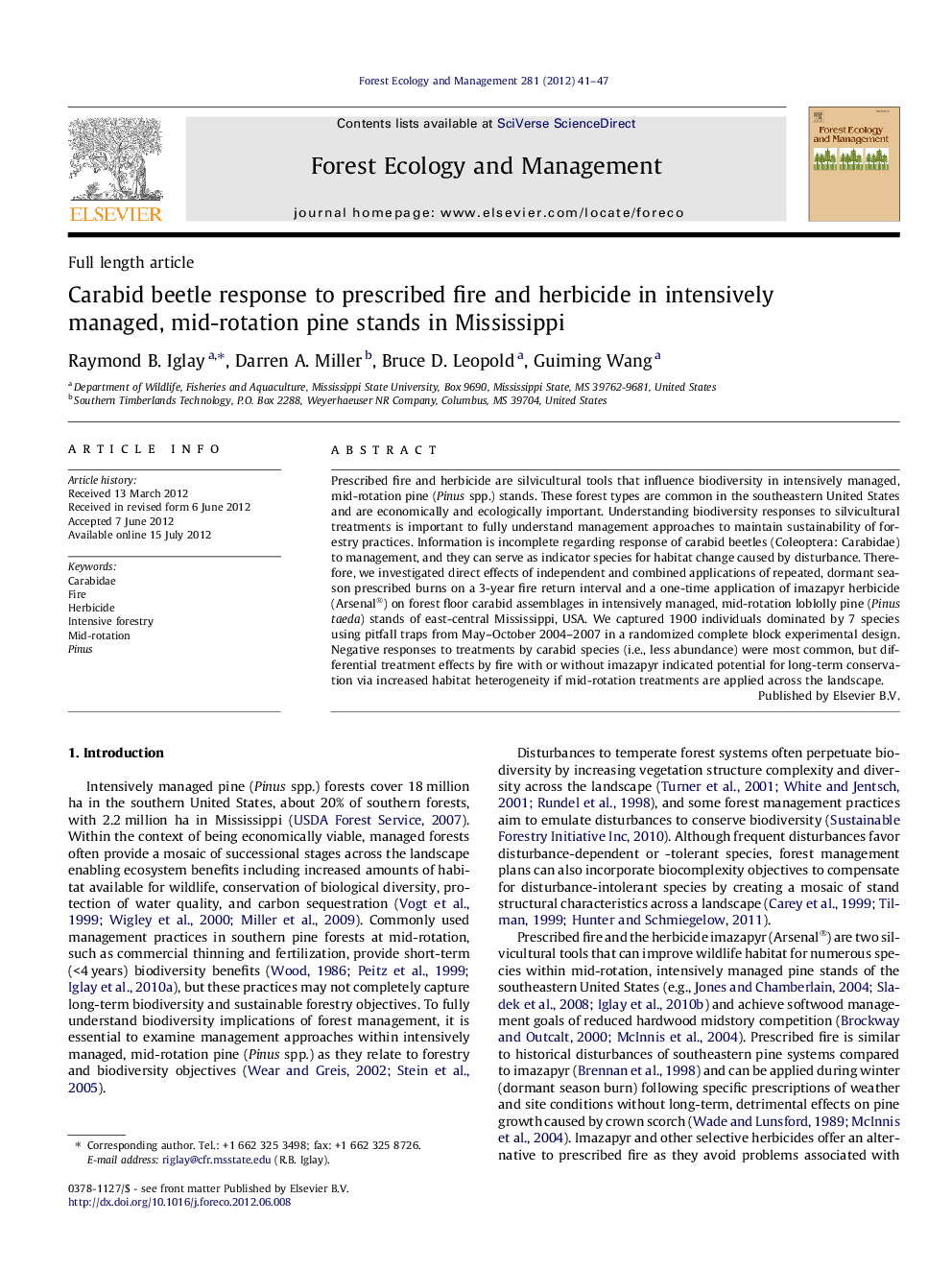| کد مقاله | کد نشریه | سال انتشار | مقاله انگلیسی | نسخه تمام متن |
|---|---|---|---|---|
| 87125 | 159233 | 2012 | 7 صفحه PDF | دانلود رایگان |

Prescribed fire and herbicide are silvicultural tools that influence biodiversity in intensively managed, mid-rotation pine (Pinus spp.) stands. These forest types are common in the southeastern United States and are economically and ecologically important. Understanding biodiversity responses to silvicultural treatments is important to fully understand management approaches to maintain sustainability of forestry practices. Information is incomplete regarding response of carabid beetles (Coleoptera: Carabidae) to management, and they can serve as indicator species for habitat change caused by disturbance. Therefore, we investigated direct effects of independent and combined applications of repeated, dormant season prescribed burns on a 3-year fire return interval and a one-time application of imazapyr herbicide (Arsenal®) on forest floor carabid assemblages in intensively managed, mid-rotation loblolly pine (Pinus taeda) stands of east-central Mississippi, USA. We captured 1900 individuals dominated by 7 species using pitfall traps from May–October 2004–2007 in a randomized complete block experimental design. Negative responses to treatments by carabid species (i.e., less abundance) were most common, but differential treatment effects by fire with or without imazapyr indicated potential for long-term conservation via increased habitat heterogeneity if mid-rotation treatments are applied across the landscape.
► We evaluate carabid beetle responses to fire and herbicide in mid-rotation pine.
► Seven of 39 species accounted for 92% of pitfall captures.
► Negative treatment effects were common, but two species responded positively.
► Carabid species richness also indicated treatment benefits for long-term diversity.
► Future, long-term monitoring within an experimental design is needed.
Journal: Forest Ecology and Management - Volume 281, 1 October 2012, Pages 41–47